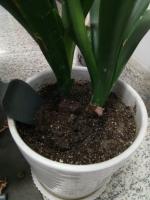How Plants Absorb Water by Osmosis
Plants are essential for maintaining the balance of our ecosystem. They produce oxygen and absorb carbon dioxide, contributing to the sustainability of all life forms on earth. One of the most important functions of plants is their ability to absorb water, which is critical for growth and survival. In this article, we will discuss how plants absorb water by osmosis.
The Basics of Osmosis
Osmosis is the mechanism by which water moves across cell membranes. It is a passive process, meaning it does not require energy input from the plant. When water is present in an area of high concentration, it will naturally flow towards an area of lower concentration until both areas are balanced.
Plant roots have specialized structures called root hairs, which extend into the surrounding soil. These structures increase the surface area of the root, allowing for greater absorption of water and nutrients. When water enters the root hair, it moves through a series of cell walls and membranes until it reaches the xylem.
The Role of Xylem
The xylem is a specialized tissue responsible for transporting water and nutrients throughout the plant. It consists of thin, hollow tubes that extend from the root to the leaves. Once water enters the xylem, it is transported upwards by a process known as transpiration.
Transpiration occurs when water is evaporated from the leaves, creating a negative pressure that pulls water from the roots towards the leaves. The vaporized water is then released into the atmosphere through small pores on the surface of the leaves called stomata.
The Importance of Osmosis
Osmosis is a key mechanism for maintaining the water balance within plants. When a plant is exposed to high concentrations of salt or other solutes, the water potential inside the plant decreases. This can lead to dehydration and even death.
In order to avoid this, plants have evolved various mechanisms to regulate water uptake and maintain their water potential. For example, some plants have specialized roots that exclude salt from the soil, while others have adapted to store water in specialized tissues, such as succulent leaves or stems.
The Conclusion
In conclusion, the process by which plants absorb water by osmosis is a critical component in their growth and survival. The root system, xylem, and transpiration all work together to ensure the plant receives the necessary nutrients and water. By understanding how osmosis works in plants, we can better appreciate the complexity and importance of these amazing organisms.

 how many times do yo...
how many times do yo... how many planted tre...
how many planted tre... how many pine trees ...
how many pine trees ... how many pecan trees...
how many pecan trees... how many plants comp...
how many plants comp... how many plants can ...
how many plants can ... how many plants and ...
how many plants and ... how many pepper plan...
how many pepper plan...































